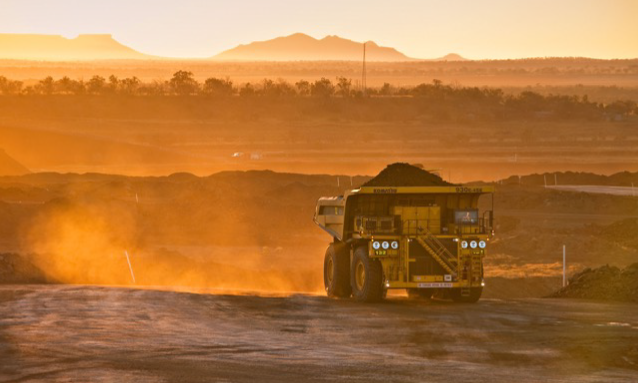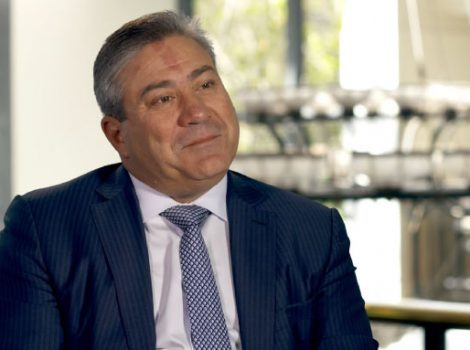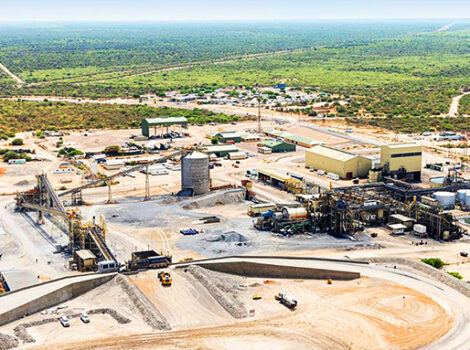
7 June 2024
London-based Kavango Resources has used high-tech geophysics to identify five high-priority targets at the Karakubis copper-silver joint venture project (JV) it shares with West Perth’s ENRG Elements in the landlocked southern African country of Botswana.
ENRG retained 10 per cent of the Karakubis operation after selling the other 90 per cent to Kavango in a deal struck last November for a staged payment of $2.5 million. The JV includes six prospecting licences comprising 2630 square kilometres within Africa’s renowned Kalahari Copper Belt (KCB). And the company’s decision to maintain a stake in Karakubis represents a potentially good move, with copper expected to play a big role in the global transition to cleaner energy.
Kavango used the geophysical process within the central portion of Karakubis to identify the priority targets, with follow-up geophysical work using gradient array induced-polarisation (GAIP) surveys to further refine the promising targets. The IP survey results will determine the ranking of the priority targets, with those ranked highest to be tested this month.
The area has been interpreted to be underlain by the D’Kar Formation (DKF) and Kavango says the contact point between the lower portion of the DKF and the Ngwako Pan Formation (NPF) is known to coincide with major copper-silver deposits in the region.
The lower DKF stratigraphy occupies a faulted-block that lies on a gravity-high and is believed to represent a basin margin setting. The beauty of the basin margin positions along the KCB are that they are considered prospective for copper and silver and actually host the two existing mines in the region, in addition to several known deposits.
“Kavango holds in excess of 6200 km2 of highly-prospective ground in the Kalahari Copper Belt. This is a very large land package with the potential to host multiple, large-scale copper silver deposits.
If we can now prove that copper mineralised fluids passed through the region, our chances of success should increase significantly.” – Kavango Resources chief executive officer Ben Turney
Interestingly, the lower DKF lithology has been identified from a range of measures, including geological mapping, structural logging of historical exploration drillholes, water bore holes and hand-held portable X-ray fluorescent (pXRF) measurements of drill core and drill chips. The interpretation is further supported by coincident magnetic and gravity data that clearly define doubly-plunging fold-hinge targets in the DKF.
Those type of fold targets are associated with trap-site structures, so the plan is to fully test them with the proposed phase one, 5000m diamond drill program due to begin this month. The targets were identified from modelling of the magnetic data and sit at relatively shallow levels below 300m.
The KCB stretches 1000km from north-east Botswana into Namibia and has become a focal point for the discovery of sediment-hosted copper deposits.
The total resources to-date exceed 8 million tonnes of contained copper.
ENRG also has a 25 per cent share in London Stock Exchange-listed Arc Minerals, which recently confirmed that a geophysical survey over its Virgo copper project revealed targets begging to be tested using modern exploration methods. Management sold 75 per cent of the operation to Arc back in 2021 in exchange for a share package then worth about $2.2 million, which it on-sold soon after.
The company also has its promising Agadez project in the West African country of Niger, where it recently used radiometrics in its ground surveys, in addition to a trenching program, to identify potentially significant uranium mineralisation at the site.
ENRG says it tested several highly-promising zones to follow up past soil sampling assays and its 2009 geophysical airborne magnetic and radiometric surveys indicated several highly-prospective areas across its Takardeit area.
The company’s Takardeit mineral resource sits within its Terzemazour exploration permit (EP) ground that is part of its fully-owned Agadez project. The Terzemazour EP is within the renowned Mousseden Formation, well known for its geological paleochannels.
Agadez has a JORC resource of 21.5 million pounds at 315 parts per million uranium, stretching from surface to a depth of 37m. In 2021, Niger was the seventh-highest producing uranium nation, with the country’s Tim Mersoi Basin hosting the highest-grade and biggest tonnage of uranium ore deposits in Africa.
ENRG is poised to benefit from demand for two of today’s most coveted metals and management will be keen for its copper and uranium inventories to be bolstered further.



